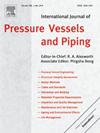石油和天然气管道内部腐蚀率预测以及可解释集合学习的影响因素分析
IF 3
2区 工程技术
Q2 ENGINEERING, MECHANICAL
International Journal of Pressure Vessels and Piping
Pub Date : 2024-09-19
DOI:10.1016/j.ijpvp.2024.105329
引用次数: 0
摘要
腐蚀是油气管道安全性和可靠性的主要威胁之一,因此准确预测腐蚀率对管道维护和修理至关重要。传统的预测方法往往忽略了更多关键因素,并且缺乏可解释性,从而阻碍了实际应用。本文提出了一种可解释的集合机器学习框架,不仅提高了预测性能,还增强了预测油气管道内部腐蚀率的可解释性。在这项工作中,ExtraTreeRegression 模型的预测精度优于其他五个机器学习模型,在特征工程之后,ExtraTreeRegression 模型的判定系数达到了 0.93。然后,利用 Shapley Additive exPlanations(SHAP)值对模型进行局部和全局的可视化解释,以帮助解释输入特征的贡献。此外,累积局部效应(ALE)成功地解释了特征如何影响油气管道的内部腐蚀率。通过收集油气管道的腐蚀数据,并进行特征工程和数据预处理,我们构建了一个全面可靠且可解释的预测模型。实验结果表明,所提出的可解释集合机器学习方法在准确性和可解释性方面都优于其他模型,为管道管理决策提供了有价值的见解。本文章由计算机程序翻译,如有差异,请以英文原文为准。
Prediction of the internal corrosion rate for oil and gas pipelines and influence factor analysis with interpretable ensemble learning
Corrosion is one of the major threats to the safety and reliability of oil and gas pipelines, making accurate prediction of corrosion rate crucial for pipeline maintenance and repairment. Traditional prediction methods often ignore more critical factors and lack interpretability, which hinders the practical application. Here, an interpretable ensemble machine learning framework is proposed, not only improving prediction performance, but also enhancing interpretability for predicting the internal corrosion rate of oil and gas pipelines. In this work, ExtraTreeRegression model has demonstrated superior prediction accuracy relative to the other five machine learning models, and the determination coefficient of the ExtraTreeRegression model achieves 0.93 after feature engineering. Then, Shapley Additive exPlanations (SHAP) values is utilized to visually interpret the model locally and globally to help account for the contributions of the input features. Furthermore, the accumulated local effect (ALE) successfully explains how the features affect the internal corrosion rate of oil and gas pipelines. By collecting corrosion data of oil and gas pipeline and performing feature engineering and data preprocessing, we construct a comprehensive and reliable prediction model with interpretability. Experimental results demonstrate that the proposed interpretable ensemble machine learning approach outperforms other models in both accuracy and interpretability, providing valuable insights for pipeline management decisions.
求助全文
通过发布文献求助,成功后即可免费获取论文全文。
去求助
来源期刊
CiteScore
5.30
自引率
13.30%
发文量
208
审稿时长
17 months
期刊介绍:
Pressure vessel engineering technology is of importance in many branches of industry. This journal publishes the latest research results and related information on all its associated aspects, with particular emphasis on the structural integrity assessment, maintenance and life extension of pressurised process engineering plants.
The anticipated coverage of the International Journal of Pressure Vessels and Piping ranges from simple mass-produced pressure vessels to large custom-built vessels and tanks. Pressure vessels technology is a developing field, and contributions on the following topics will therefore be welcome:
• Pressure vessel engineering
• Structural integrity assessment
• Design methods
• Codes and standards
• Fabrication and welding
• Materials properties requirements
• Inspection and quality management
• Maintenance and life extension
• Ageing and environmental effects
• Life management
Of particular importance are papers covering aspects of significant practical application which could lead to major improvements in economy, reliability and useful life. While most accepted papers represent the results of original applied research, critical reviews of topical interest by world-leading experts will also appear from time to time.
International Journal of Pressure Vessels and Piping is indispensable reading for engineering professionals involved in the energy, petrochemicals, process plant, transport, aerospace and related industries; for manufacturers of pressure vessels and ancillary equipment; and for academics pursuing research in these areas.

 求助内容:
求助内容: 应助结果提醒方式:
应助结果提醒方式:


